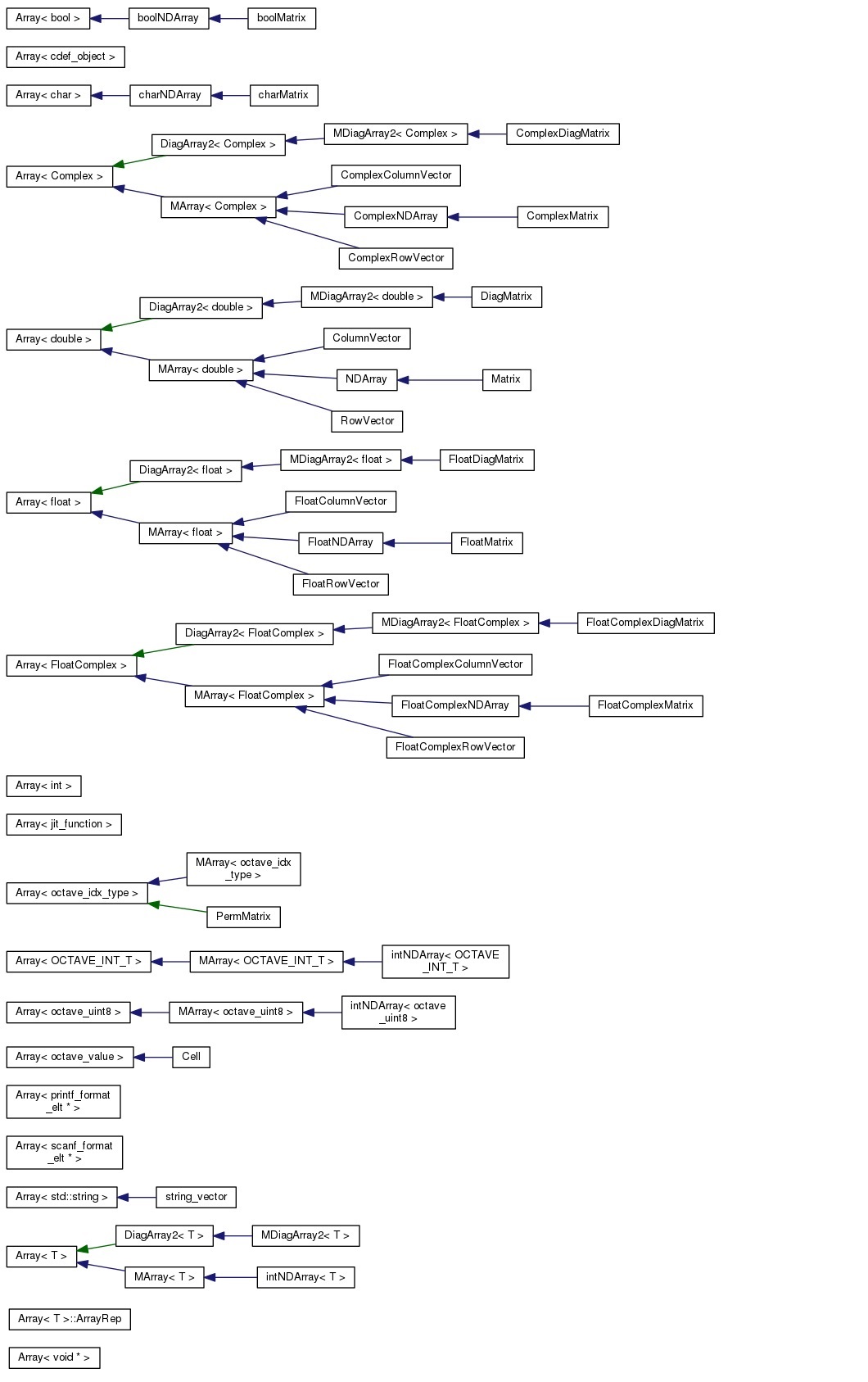Project liboctave 4.2: Difference between revisions
Jump to navigation
Jump to search
(Created page with "Especially for new developers it is hard to get started with liboctave, one of the core elements of GNU Octave. Liboctave defines and implements data types, operators, and muc...") |
(No difference)
|
Revision as of 09:11, 26 November 2014
Especially for new developers it is hard to get started with liboctave, one of the core elements of GNU Octave. Liboctave defines and implements data types, operators, and much more. To change that state this long term project has the following goals:
- Document the existing code for developers (Doxygen)
- Bring all the data types into order
- Reduce the code to a sufficient minimum
- Remove Makros where possible
Milestone 1 - The Array hierarchy
A first desirable milestone is to start with the root of all advanced data types. The class Array. Here is a Doxygen generated picture of the current state inside the development version of liboctave.
Questions:
- Identify the difference between for example Array<char>, charNDArray, and charMatrix
- What is necessary?
- What are preservable convenience classes?
- Is there code redundancy?
